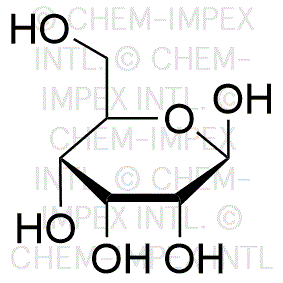D-Allose is widely utilized in research focused on:
- Pharmaceutical Development: D-Allose has potential applications in drug formulations, particularly for its role in enhancing the stability and solubility of active pharmaceutical ingredients.
- Diabetes Management: Research indicates that D-Allose may help regulate blood sugar levels, making it a candidate for dietary supplements aimed at supporting diabetes management.
- Food Industry: As a low-calorie sugar substitute, D-Allose can be used in food products to provide sweetness without the calories associated with traditional sugars, appealing to health-conscious consumers.
- Cosmetic Formulations: Its moisturizing properties make D-Allose a valuable ingredient in skincare products, promoting hydration and skin health.
- Biotechnology: D-Allose is being explored for its potential in cell culture media, where it can provide a nutrient source that supports cell growth and productivity.
General Information
Properties
Safety and Regulations
Applications
D-Allose is widely utilized in research focused on:
- Pharmaceutical Development: D-Allose has potential applications in drug formulations, particularly for its role in enhancing the stability and solubility of active pharmaceutical ingredients.
- Diabetes Management: Research indicates that D-Allose may help regulate blood sugar levels, making it a candidate for dietary supplements aimed at supporting diabetes management.
- Food Industry: As a low-calorie sugar substitute, D-Allose can be used in food products to provide sweetness without the calories associated with traditional sugars, appealing to health-conscious consumers.
- Cosmetic Formulations: Its moisturizing properties make D-Allose a valuable ingredient in skincare products, promoting hydration and skin health.
- Biotechnology: D-Allose is being explored for its potential in cell culture media, where it can provide a nutrient source that supports cell growth and productivity.
Documents
Safety Data Sheets (SDS)
The SDS provides comprehensive safety information on handling, storage, and disposal of the product.
Product Specification (PS)
The PS provides a comprehensive breakdown of the product’s properties, including chemical composition, physical state, purity, and storage requirements. It also details acceptable quality ranges and the product's intended applications.
Certificates of Analysis (COA)
Search for Certificates of Analysis (COA) by entering the products Lot Number. Lot and Batch Numbers can be found on a product’s label following the words ‘Lot’ or ‘Batch’.
*Catalog Number
*Lot Number
Certificates Of Origin (COO)
This COO confirms the country where the product was manufactured, and also details the materials and components used in it and whether it is derived from natural, synthetic, or other specific sources. This certificate may be required for customs, trade, and regulatory compliance.
*Catalog Number
*Lot Number
Safety Data Sheets (SDS)
The SDS provides comprehensive safety information on handling, storage, and disposal of the product.
DownloadProduct Specification (PS)
The PS provides a comprehensive breakdown of the product’s properties, including chemical composition, physical state, purity, and storage requirements. It also details acceptable quality ranges and the product's intended applications.
DownloadCertificates of Analysis (COA)
Search for Certificates of Analysis (COA) by entering the products Lot Number. Lot and Batch Numbers can be found on a product’s label following the words ‘Lot’ or ‘Batch’.
*Catalog Number
*Lot Number
Certificates Of Origin (COO)
This COO confirms the country where the product was manufactured, and also details the materials and components used in it and whether it is derived from natural, synthetic, or other specific sources. This certificate may be required for customs, trade, and regulatory compliance.


